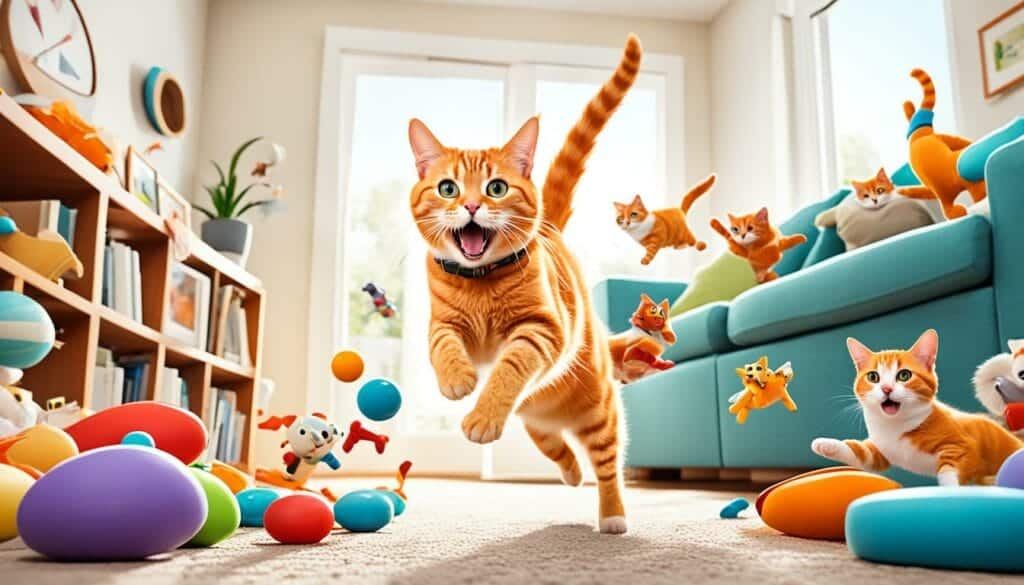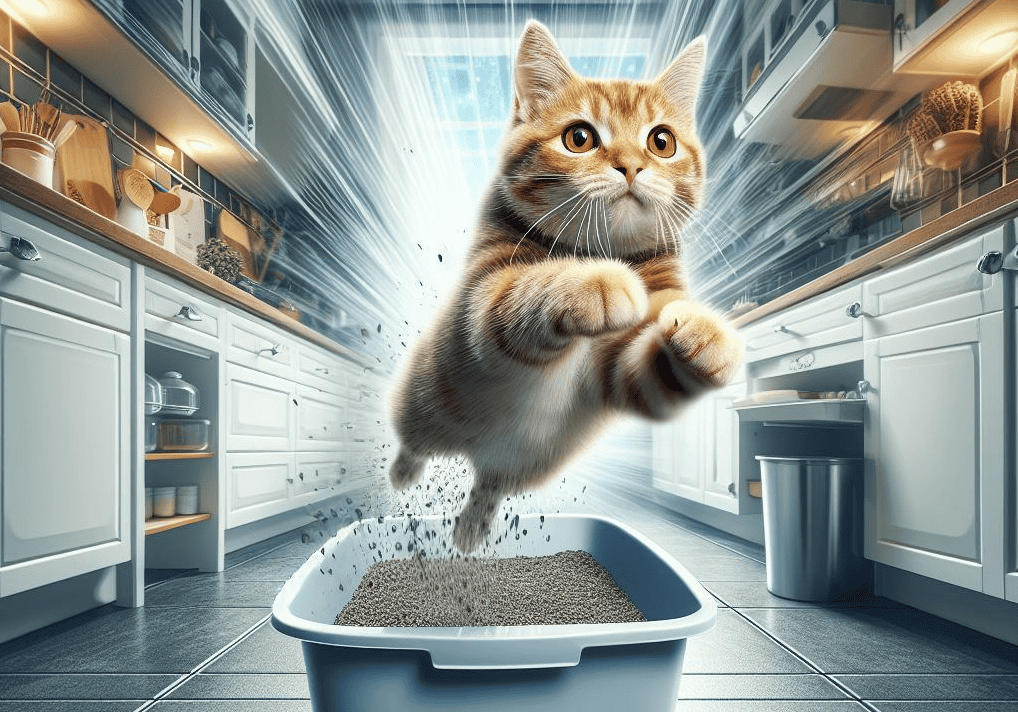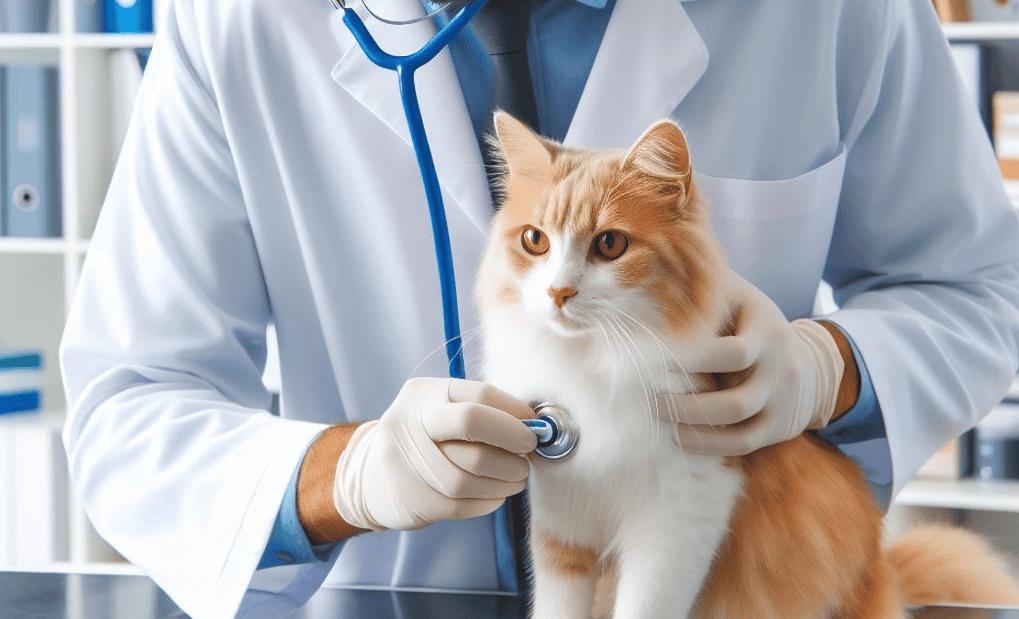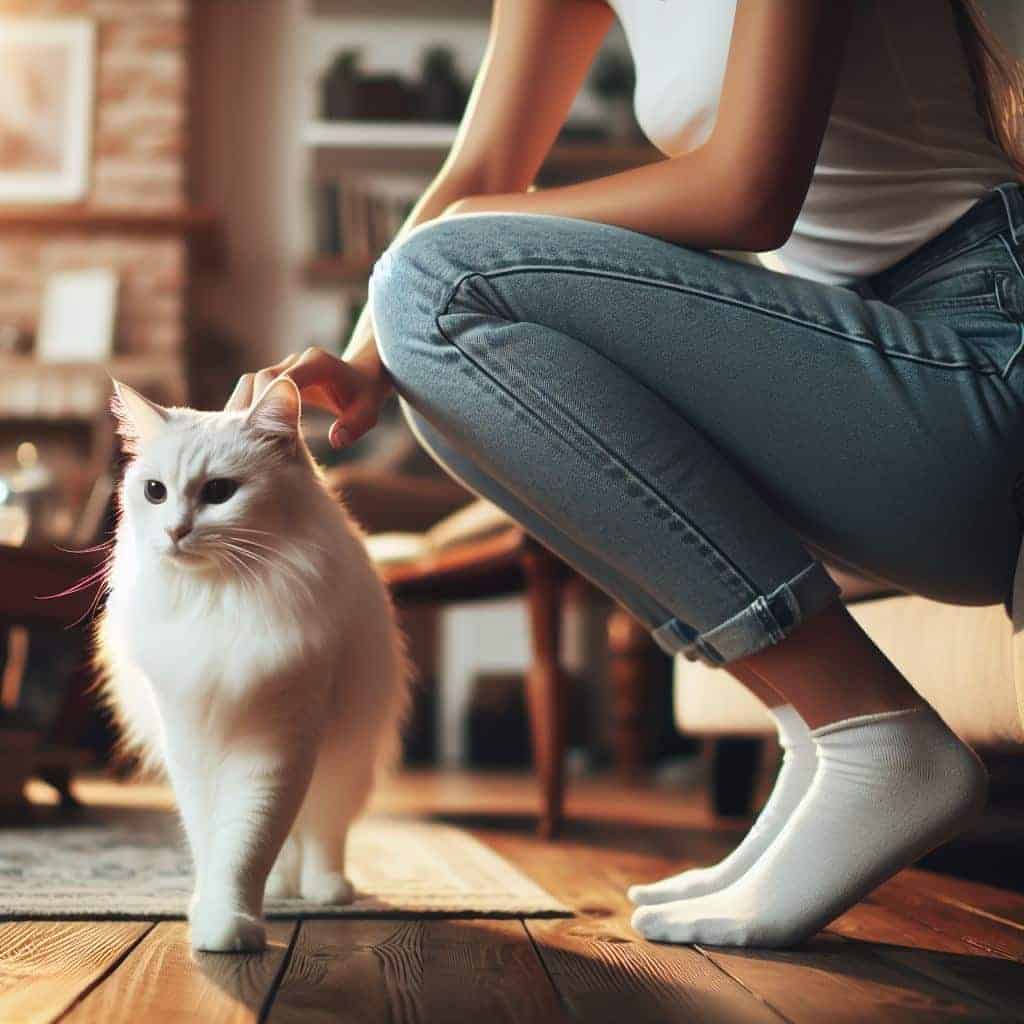I am sure every cat owner has experienced this before; one moment your cat is peacefully napping in the sun, and the next they are running around crazily, bouncing off walls and furniture.
Yes, I’m referring to the enigmatic bursts of energy we affectionately call ‘cat zoomies’.
But what are cat zoomies, exactly?

As a cat parent, I’ve spent many a late hour pondering this cat zoomies behavior, chuckling as Doofy performed his spontaneous sprints—usually when I’m about to call it a night.
From certified cat behavior consultants to the average pet owner, we’ve all grappled for a cat zoomies explanation, seeking to understand what causes those mysterious behaviors.
Scientists attribute these Frenetic Random Activity Periods (FRAPs) to a natural energy conservation strategy, where the house becomes a simulated jungle and the dining room chair, a hapless prey. However intriguing they may be, they can sometimes signal more serious issues like discomfort or illness, and it’s key for us to discern when our pets are merely releasing pent-up energy or asking for help.
Let’s dive into the world of FRAPs to understand our cat’s most entertaining—and baffling—pastime better.
What Are Cat Zoomies aka FRAPs?
Those sudden sprints up the hallway or insane leaps onto the furniture you’ve witnessed are known as Frenetic Random Activity Periods, or FRAPs, a fancy term for what most of us refer to as ‘cat zoomies’.
Despite the comical effect, these quirky behaviors have significant meaning for our feline companions.
Biological Basis of Cat Zoomies
Cat zoomies, or Frenetic Random Activity Periods (FRAPs), are rooted in the biological and evolutionary traits of domestic cats.
These bursts of energy are reminiscent of the natural behavior of their wild ancestors, who needed to conserve energy to hunt effectively.
This behavior is not only a physical exercise but also a mental one, as it mimics the hunting patterns—stalking, pouncing, and chasing—that are crucial for their survival in the wild
Normal vs. Excessive Zoomies
I know it’s tempting to chuckle whenever a furry missile whizzes by, but there’s a line between normal cat zoomies and ones that might signal underlying health issues.
While it is true that normal zoomies could be just a release of surplus energy, excessive zoomies might prompt a trip to the vet to rule out conditions like hyperthyroidism or arthritis.
Behavior |
Characteristics |
Potential Reason |
|---|---|---|
| Normal Zoomies | Sporadic, short sprints | Energy release, playfulness |
| Excessive Zoomies | Frequent, frantic dashing | Medical concerns, anxiety |
Common Triggers for Cat Zoomies
Cat zoomies can be triggered by several factors, including the release of energy conservation, medical conditions, crepuscular rhythms, over-simulation, or simply the playful nature of cats. Sudden noises, changes in the environment, or certain scents may also prompt a cat to have a burst of energy and start running around wildly.
Let’s delve into the reasons behind these energetic spurts.
Energy Conservation and Release
Cats are notorious for their love of sleep, but when they’re not snoozing, they tend to release pent-up energy in what can only be described as a full-throttle zoom.
This behavior is essential for releasing pent-up energy, an instinct that allows them to go from zero to sixty in pursuit of their prey—or perhaps the elusive red dot of a laser toy.
Instinctual Hunting Behaviors in Domestic Cats
Now, while your house cat isn’t out on the prowl in the wild, they still possess those instincts hardwired into their behavior.
The zoomies can often be attributed to those deep-rooted, instinctual hunting behaviors.
As amusing as it is, it’s also a reminder of how quick and agile our feline friends are.
Crepuscular Rhythms
Domestic cats are crepuscular, meaning they are most active at dawn and dusk.
This aligns with the natural hunting patterns of their wild ancestors, who would be most active during these cooler, low-light periods of the day.
The zoomies often occur in the early morning or late evening when cats feel this natural surge of energy.
Overstimulation
Certain situations can overstimulate a cat and trigger bouts of zoomies, such as:
- After using the litter box
- Waking up from a long nap
- Around feeding times when the cat gets excited
- When the owner returns home the cat becomes excited
Underlying Health Issues
While zoomies are generally a normal, healthy behavior, excessive or unusual zoomies could indicate an underlying health condition like hyperthyroidism, pain, or irritation that is causing the cat to have too much energy.
Signs of Abnormal Zoomies
Zoomies may be a sign of an underlying health problem if they:
- Occur much more frequently or intensely than normal for that particular cat
- Are accompanied by other concerning symptoms like:
– Weight loss
– Increased hunger or thirst
– Changes in litter box habits
– Unusual vocalizations
– Abnormal sleep patterns
When to See the Vet
If a cat’s zoomies seem abnormal and excessive and are accompanied by other worrying symptoms, it’s best to take them to the vet for an examination.
This is especially important for senior cats, as abnormal zoomies could indicate a condition like hyperthyroidism.
Owners should also bring their cat to the vet if the zoomies appear to be triggered by potential sources of discomfort – or if the behavior is significantly disrupting the cat’s (or the owner’s) normal routine and quality of life.
Further Reads
- https://www.fetchpet.com/the-dig/cat-zoomies
- https://www.dailypaws.com/cats-kittens/behavior/common-cat-behaviors/cat-zoomies
- https://www.catster.com/ask-the-vet/cat-zoomies-vet-answer/

In her previous life, Lisa traveled extensively, both for work and leisure. After the pandemic struck, Lisa locked up her luggage and adopted a cat ever since.
Lisa is now an avid cat lover, she devotes most of her free time serving as butler to her adorable feline at home. When she is not with her cat, she can be seen using her phone sourcing for the latest cat supplies online.




